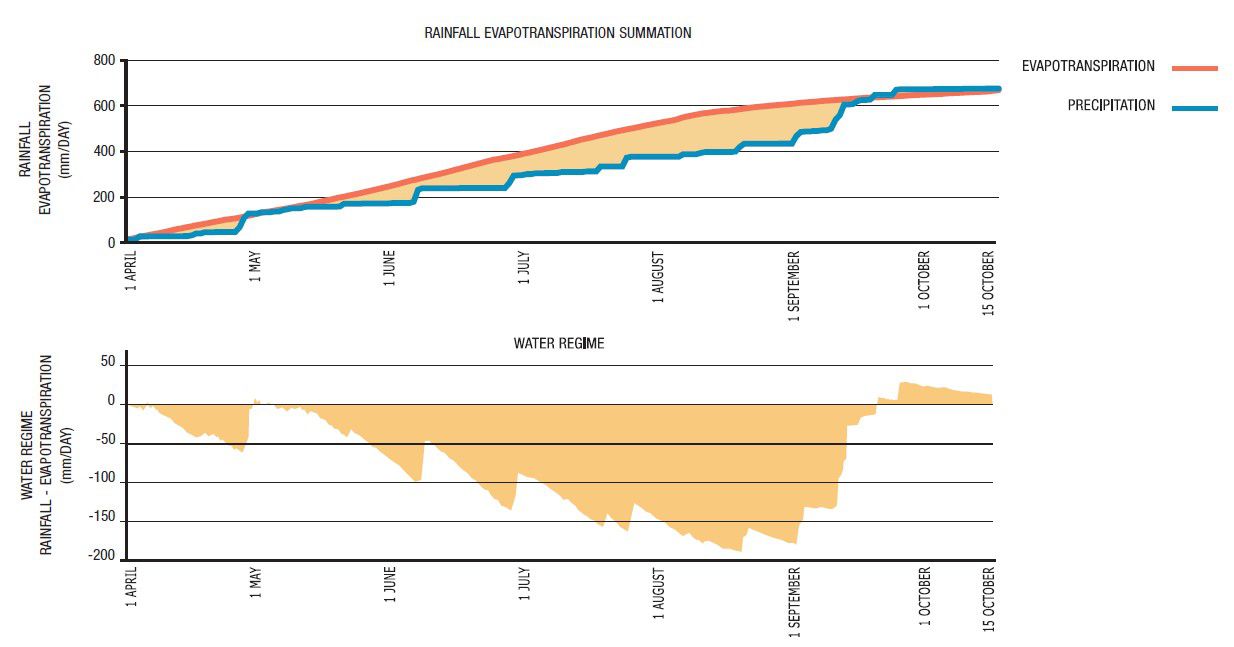VINTAGES
VINTAGE 2017
2017 GROWING YEAR
The 2017 growing season was quite similar to that of 2016, marked by predominantly Mediterranean weather, by moderately water-stressed vines, and by overall conditions that encouraged ripeness even in late-ripening varieties.
WEATHER CONDITIONS
The winter was very severe, particularly in January, when the temperature actually hit a low of – 15.5 °C and cold spells of 5°C below zero lasted for as long as 2-3 weeks, and the first four months of the year brought no rainfall whatsoever. The last few days of March, however, saw above-average temperatures, bringing forward budbreak by some 10-15 days with respect to the seasonal norm. Mid-April, though, experienced a sudden drop in temperature and a succession of cloudy days with strong northeast winds, but still no rain. Clear nights on April 20-21 caused a plunge in temperatures to freezing levels of -2.5 --3.5 °C, right in the period when the buds had already developed to 5-35cm. Since there had been predictions of a risk of freeze, the winery took pre-emptive action on three fronts to prevent damage. We drove fan-equipped tractors in some vineyards to mix up the various layers of air, while in others we put out hundreds of diesel-fuelled heaters to both heat the air and to create a blanket of smoke; finally, in a limited area of some 15 hectares we irrigated over the canopy, to benefit from the heat that is generated by the passage from water to ice. Thanks to these extreme measures, we were able to keep to a minimum any damages.
WATER REGIME AND GROWTH NOTES
May ushered in fine weather, with a thrust upwards in temperatures, accompanied by dry weather--good conditions for flowering, which concluded rapidly. That was followed, on 2-6 June, by heavy rainstorms, which restored groundwater reserves and cleaned away the remnants of flowering.
An initial growth check revealed, in chardonnay and the pinots, buds of low-fertility, which of course results in fewer clusters per shoot, due as well to the infertility of the base buds. While this strongly impacted the pinots and chardonnay, sauvignon blanc, on the other hand, displayed normal fertility. With respect to fruit-set, some varieties--merlot, pinot grigio trained to Guyot, and spurred cordon-trained chardonnay--, in some vineyards, experienced significant coulure. June and almost all July enjoyed ideal summer weather, with maximums in the 28-29°C. range and minimums at 14-16°C., which encouraged efficient photosynthesis. Water reserves were likewise satisfactory, since light heat-stress levels were followed by periods of moderate rainfall. Veraison in the early-ripeners began 10 days ahead of the historical norm: 10 July for pinot grigio and sauvignon blanc.
The high temperatures from late July through 6 August, however, were unusual, with highs of 38-39°C. and lows of 26-27°C. It is unclear how much these near-tropical conditions impacted the ripening process, but right after this period, temperatures were back in optimal ranges, and day-night differentials were excellent: maximums of 26-29°C. and minimums of 11-16°C., all the more appreciated so late in the season. Health conditions of the clusters remained high, and the season did not bring any special problems with fungal attacks, such as downy or powdery mildew.
As far as our memory goes, the 2017 summer was perhaps the most extended in recent years that showed no particular heat stress. Overall then, it seemed easy from the viticultural point of view, delivering fruit that was high in sugars, sound, aromatic, and with ripe phenolics.




